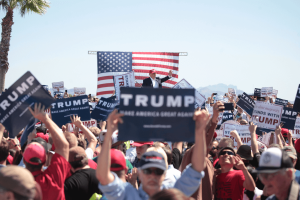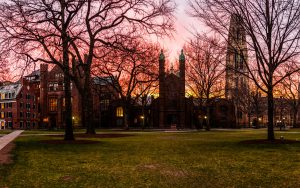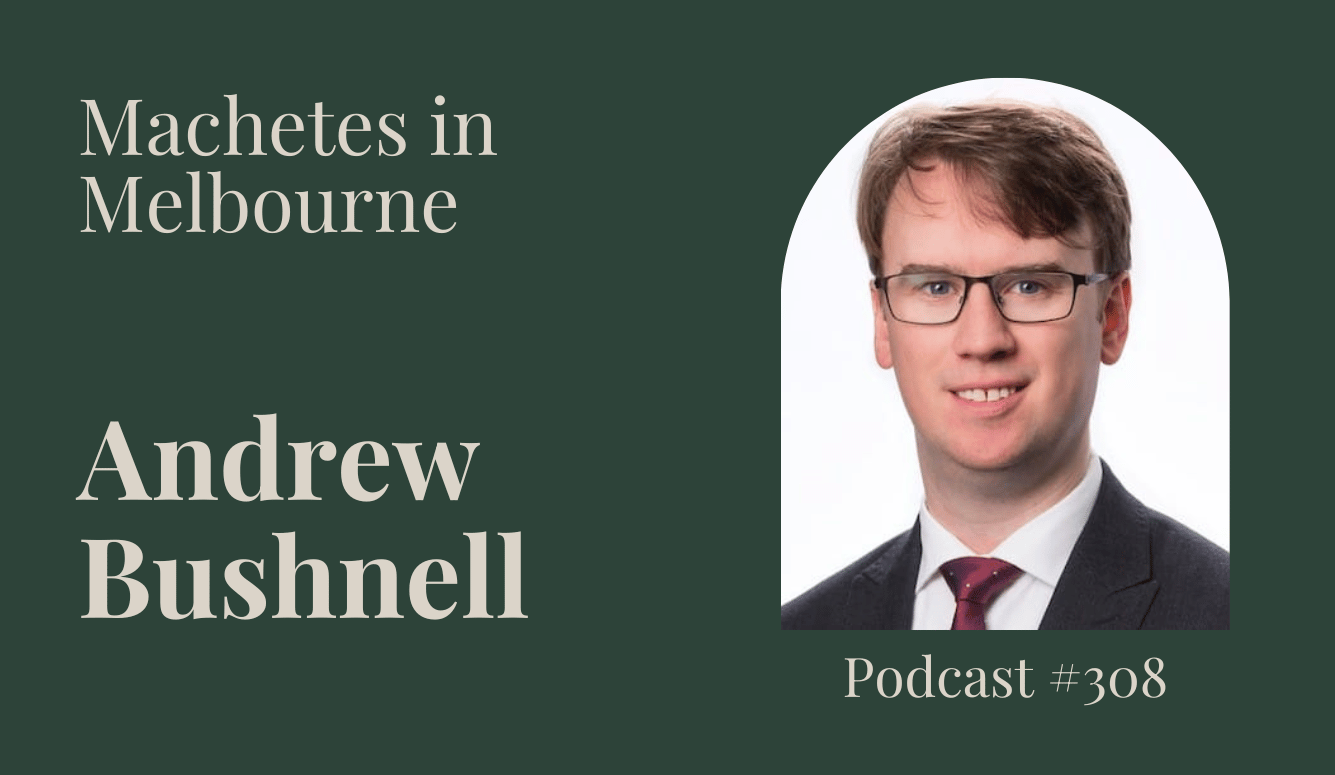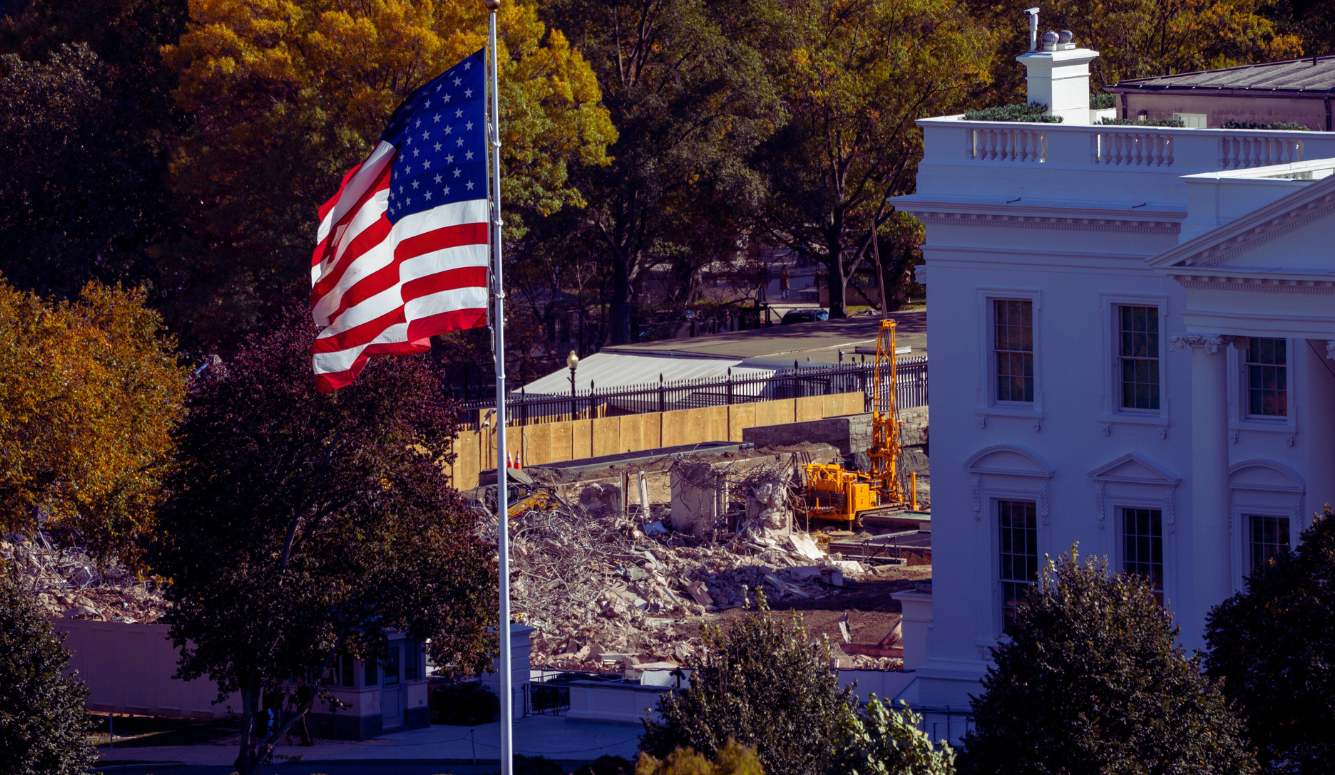Art and Culture
Reassessing Cultural Divisions in the United States
There can be no doubt that the current American political landscape is characterized by polarization and extremism in many forms.

If there was any doubt before, this election cycle brought home how divided the U.S. is on issues of national identity. It also brought political and cultural tensions to the surface, displayed in acts of outrage and the strident expressions of the partisans of different views. Old ways of dividing the social landscape no longer apply, and some of the events of the last few years are so bizarre it is difficult to believe, had they been scripted as a movie, the plot could have been pitched as anything other than satire even five years ago. Yet this is the world we wake up to every day.
Consider arch-progressive Michael Moore’s resounding expression of the popular sentiment in support of Trump, or the fact that we now have a president-elect that was once used as a throw-away joke on the Simpsons in 2000, someone who retweets his fans’ remarks, and who campaigned in large part on his business acumen while his business life reads like the scandalous decline of a B-grade Hollywood starlet. This is to say nothing of the more-and-more blatant hypocrisy that pundits and news organizations have been displaying on all sides of the political spectrum.
Events like these indicate that the usual lenses through which we understand the political and cultural scene, the concepts and explanatory frameworks we bring to bear on the social world, no longer offer the resolution needed to keep things in focus. As a consequence, effective group agency is inhibited by fruitless confrontation rooted in misunderstanding. These occasions thereby provide opportunities for reflection on the nature of the breakdown, and for the assembly of a new understanding on the basis of what we learn through that reflection.
Toward that end, I want to highlight two places where it seems to me our concepts have come under stress to the point of fracture during this election cycle, and to offer two distinctions that are meant to reconstruct a better perspective from the result. I will close with a suggestion that educators have a duty to make use of the second distinction in a particular way.

If one thinks of Trump’s voting bloc as ‘conservative’ in the sense associated with the contemporary Republican Party, it is difficult to make sense of Michael Moore’s remarks. At the same time, it is clear that as a populist Trump drew support from people who (in some sense) think of themselves as putting America and Americans first over the interests of extra-national individuals and organizations. Meanwhile, a large bloc of Hillary Clinton supporters, and some who identify as Republican, sees this populist or nationalist sentiment as, at bottom, jingoistic and racist.
This being so, I propose we think of the split in the last election not along Democrat and Republican lines, but rather between urban globalists and non-urban nationalists. This demarcation is not perfect, and I offer it in the spirit of a proposal to be vetted by criticism. Of course, the individuals in question quite often voted for Democrats and Republicans, so that distinction is not to be disregarded. But when our aim is to understand the motivations of those who voted Democrat and Republican, it seems to me that ‘urban globalist’ and ‘non-urban nationalist’ better approximates the divide than ‘Democrat’ and ‘Republican’ as commonly understood.
The urban/rural division in American culture is a perennial favorite; for an illuminating recent take see Victor Davis Hanson in the City Journal. I have used ‘urban/non-urban’ rather than ‘urban/rural’ because suburban sprawl, and the strip-malled highway system in the eastern half of the country, is home to many of those who would fall in the non-urban camp without living in a rural setting.
Either way, this division in American life is sometimes characterized through the lens of education, with the political positions of non-urban Americans reduced to the rantings of the ignorant and those of urban Americans rendered as elitist and morally depraved. Both tendencies should be guarded against. Urban and rural or non-urban Americans value different things in lifestyle and community. To disregard those differences in favor of a story about the educated and the ignorant, or the moral and the depraved, is to mislocate the source of the disagreements that divide us. Instead, we should strive to be sensitive to the nuanced forms of life that urban and non-urban Americans value.

Coming from a fairly rural middle-class family background, and having spent the last decade among the academic urban class, I find myself particularly dismayed by the way urban Americans tend to look down on rural and agrarian communities. I do not recall a time when an offhand denigrating remark about rural Americans was ever given anything but a pass or affirmation. But rural American habits of mind, deed, and value, conceived in part by contrast with the habits that urban environments offer, run back to the founding of this country. As Thomas Jefferson wrote in correspondence with James Madison:
I think our governments will remain virtuous for many centuries; as long as they are chiefly agricultural; and this will be as long as there shall be vacant lands in any part of America. When they get piled upon one another in large cities, as in Europe, they will become corrupt as in Europe.
Unfortunately, the globalist/nationalist divide achieves some of its most stark and unsettling expression in white nationalism, and that lends itself to another confusion concerning urban globalists and non-urban nationalists. This aspect of the Trump phenomenon is often highlighted in stories about his popularity: e.g. at The Atlantic, The American Spectator, CNN, The New York Times, Newsweek, and thinkprogress.org. Trump’s victory, we are told or intimated, is primarily the product of white racism and it should be treated that way.
It should go without saying that these sources are not all on a par when it comes to standards of impartiality, or of journalistic integrity more generally. Caveat Lector. But while expressions of white nationalism have been a predictable consequence of the rightward expansion of the Overton Window in the wake of Trump’s political rhetoric and unconventional media presence, we should not lose sight of the fact that Trump rode a wave of populism in winning the election. Indeed, comparing the demographics of Trump’s voters to those of Romney in 2012, Trump showed the largest gains among blacks and Hispanics.
Yet these facts too often lead those on the left to double-down on the charge of ignorance — Republican voters are too stupid to know what’s in their best interest. Rarely is it suggested that different values, and so different interests, lie at the base of the disagreement. Melinda Byerley, a San Francisco CEO, writes:
One thing middle America could do is to realize that no educated person wants to live in a shithole with stupid people….We especially don’t want to live in states where the majority of residents are still voting for things that are against their own interests just because they don’t want brown people to thrive.
The vocal minority of white supremacists notwithstanding, what divides nationalists from globalists in America today is not usefully conceived through the lens of race, and those on the left who reach for that understanding are doing a gross injustice to most of the Americans they classify in those terms. We all would be much better served if the nationalists and the globalists had a more frank and unremitting conversation about the character of this country, both concerning local issues in different states and communities, and in terms of the nation’s role in the world today.
Together these reflections on our situation suggest the following: as we try to make sense of the changing political landscape, we need to avoid the tendency to think that Republican voters are uneducated racists, and that Democrat voters are elitist reprobates. That will require having some alternative notions concerning what unifies and divides Americans today. I propose urban globalism and non-urban nationalism as one way of proceeding.
* * *
A recurring theme in this election cycle was the condemnation displayed, on all sides, to the political opponents of different positions. Thoughtful dialogue went out the window early, and by the end of the election one felt as though one’s sources of news and commentary were obviously bent toward a particular view. Trust in news organizations plummeted, while instances and accusations of ‘fake news’ quickly became commonplace. I propose that one source of this trend was the excessively ideological character of the political conversations we were exposed to.
In political discourse the ideological stance or attitude deserves special contrast with the critical. The ideological stance is characterized by epistemic certainty, and it is brash, monological, and exhortative. The ideologue knows what she thinks, and she knows what you should think, too. The critical stance is characterized by epistemic humility, and it is careful, dialogical, and inquisitive. The critical person sees political conversation as a dialogue, and she is both interested in learning from conversation and willing to change her position on the basis of what she learns.
The ideologue is convinced that she is right, however, and conversation can only be an opportunity to convert non-believers to the Truth, to agree with like-minded thinkers about what the Truth is, or to castigate non-believers as Wrong.
Too often in political disagreement, the ideologue allows herself to move from epistemic to moral castigation — what began as a charge that the ideologue’s opponents are factually wrong resolves itself into an accusation that her opponents are evil. This allows her to leverage social condemnation on those she thinks wrong. When the ideologue is surrounded by similarly-minded ideologues, that condemnation is easy to elicit. And so the political ideologue fosters factionalism in a polity.
One who manifests a critical attitude, however, is careful to give her interlocutor the benefit of the doubt on matters of epistemic concern, and so she is in that regard protected against the slide to moral condemnation that the ideological stance brings with it.
Had there been more critical and less ideological commentary during the last election, we might have hoped to have less invective thrown around. Had there been a more critical and less ideological populace, we might have hoped for a different political landscape. We might also have ended up in a position where news organizations were not deemed so untrustworthy.
* * *

This brings me to a final consideration. I believe that educators have a duty to employ the ideological/critical distinction in a particular way. In their pedagogical guise, these attitudes shape the way a classroom is run. As educators, we are (at least in some cases) presumed to be in mastery over the material that we impart to our students. This involves adopting an ideological stance, as characterized above.
That may be well and good when the subject matter is settled in the discipline. Where the subject is contentious, however, and certainly where the instructor does not have mastery over it, one should cultivate a critical pedagogy. This should be all the more true when the issue in question is of live political interest and the pedagogical setting is higher education (it is for this reason that an organization like the Heterodox Academy is a reassuring sign of the recent times). An academy that fosters political ideology is an academy that, where the politics is contentious, does not prepare its students for the active duties that wait in the workforce and public life.
Notice the clause — we all draw a line somewhere, and to the extent that it comes up we should of course be ideological about, e.g., race war or genocide. By the time students are undertaking higher education, however, that ideological indoctrination should already be taken care of. What should be avoided is ideological pedagogy over issues that remain of ongoing social debate. By adopting a critical pedagogy, on the other hand, the educator fosters the difficult process of trying to sort out what to think about the issue, while instilling in her students the attitudes needed to navigate these disagreements in their professional and public lives.
The pathologies of ideological pedagogy in higher education become particularly evident when students taught by ideologues find themselves around people who were not indoctrinated into their ideology. Without the resources to dialogue with and try to understand the viewpoints of the other, the workplace and social world become riven with discord. As a consequence, some young ideologues seek only like-minded colleagues in business and social circles. This results in the formation of professional and social enclaves of orthodoxy.
And so political polarization spreads out from higher education, into the workforce and the institutions of our everyday lives. To avoid becoming the unwitting progenitors of social discord, the monks of academia must strive to be sensitive to the differences that animate us politically. And that requires adopting a critical stance about matters of contentious social concern.
* * *
There can be no doubt that the current American political landscape is characterized by polarization and extremism in many forms. One question is what to do about that fact. Another, in certain respects prior question, asks why there is so much polarization. I do not think we have the beginning of an adequate answer to the latter question, and for this reason I think we should all of us endeavor to be more critical and less ideological in our stances toward one another.





